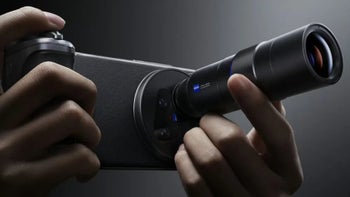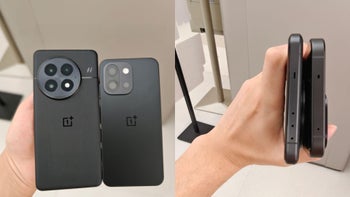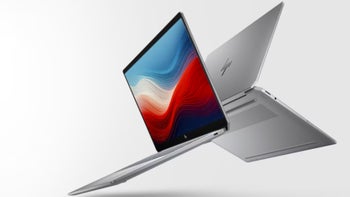Motorola Razr Plus (2024) vs Razr Plus (2023): Upgrades on all fronts
We may earn a commission if you make a purchase from the links on this page.

Intro
Motorola finally hit the mark with its foldable phone series when it launched the Razr Plus (2023) last year, which is also known as the Razr 40 Ultra outside of the US. Now the company has launched the successor, the Razr Plus (2024), and it comes with several key upgrades that make it an even better flip phone.
With the 2024 edition of the Razr Plus buyers get a much brighter and larger cover display, a new and more powerful chipset, faster and more power-efficient storage, brand new camera system and more. All in all it sounds like a comprehensive improvement over the 2023 version of the Razr Plus.
The good news is that the price remains the same, starting at $999 for the base model with 256GB of storage and 8GB of RAM.
Motorola Razr Plus (2024) vs Motorola Razr Plus (2023) differences:
| Razr Plus (2024) | Razr Plus (2023) |
|---|---|
| Larger cover display measuring at 4" with 2400 nits peak brightness | Cover display is 3.6" and maxes out at 1100 nits peak brightness |
| Main display now supports Dolby Vision HDR content and goes up to 3000 nits peak brightness | Main display supports only HDR10+ and goes up to 1400 nits peak brightness |
| Lower back panel is made out of silicone polymer (vegan leather) | Lower back panel is made out of glass |
| IPX8 water resistant (up to 1.5m for 30 min) | Comes with less effective water-repellent coating and no water resistance certification |
| New more powerful Snapdragon 8s Gen 3 chipset | Older and not as capable Snapdragon 8+ Gen 1 |
| 45W wired charging, 15W wireless, 5W reverse-wireless | 30W wired charging, 5W reverse wireless |
| New 50MP main camera | 12MP main camera |
| 50MP 2X telephoto cameara | 13MP ultra-wide camera |
| Faster and more power-efficient UFS 4.0 storage | UFS 3.1 storage |
Table of Contents:
Also read:
- Galaxy Z Flip 6 vs Motorola Razr Plus (2024)
- Motorola Razr Plus (2024) vs Razr (2024)
- Motorola Razr Plus (2025) vs Razr Plus (2024) Preview
Design and Size
Perfecting the look while adding durability
Motorola has slightly altered the design of its new high-end flip phone, making the 2024 Razr Plus with a lower back panel made of vegan leather (silicone) instead of the glass one we saw last year. This might not seem as premium at first, but it offers many benefits; it is more grippy, helping it slip less, and it does not show fingerprints.
Another change to the exterior look of the Razr Plus is the cover display, which has grown to 4 inches, versus the 3.6 inches on the Razr Plus from 2023. As a result, the phone looks cleaner and the top half of it is now all screen (besides the camera cutouts).
The hinge has also been improved on the new Razr Plus, now able to sit at more angles and with a much less visible crease—a very welcome improvement.
Arguably a more important upgrade, however, is the fact that the 2024 Razr Plus comes with a water resistance certification of IPX8, whereas the 2023 Razr Plus has none (besides a measly water-repellent coating).
Thankfully, just like the previous Razr Plus, Motorola has included a charger and a protective case inside the box, as well as a charging cable. The difference is that this year the case matches the color of your phone and you also get a color-matched vegan leather lanyard.
Display Differences
Motorola has gone the extra mile to upgrade both displays of the Razr Plus this year. The 2024 model's 4" cover display has a higher 165Hz refresh rate (vs. 144Hz) and a much higher 2400 nits peak brightness (vs. 1100 nits). Truthfully, though, the higher refresh rate is a marketing stunt. The real upgrade to get excited for is the brightness, which will positively affect outdoor visibility.
The main, foldable display has not changed in terms of size or resolution, but it has also received a nice bump to its brightness. The 2024 Razr Plus can reach 3000 nits peak brightness, which is about double that of the 2023 model. It also comes with Dolby Vision support for HDR content, whereas the predecessor only has HDR10+ support, making the newer model better equipped for watching movies and other video material.
The display on the new Razr gets somewhat brighter. In our display lab tests we measured a little under 200 nits higher brightness levels. Minimum brightness has also improved by about 1 nit, which will help when you are in very light-deprived spaces. The color accuracy on the newer model is also considerably better.
Performance and Software
More horsepower and faster storage
The Razr Plus (2024) comes with Qualcomm's Snapdragon 8s Gen 3. This is a somewhat less capable version of the high-end Snapdragon 8 Gen 3 silicon from Qualcomm, mainly in the graphics department. The good news is that it is also a less power hungry chipset, which means lower temperatures and less power drain.
Compared to the Snapdragon 8+ Gen 1, the Snapdragon 8s Gen 3 offers significant improvements in performance, both in terms of graphics and multi/single core processing power.
As for storage and memory, Motorola has stuck to the same combination as last year, which is 8/256GB. The difference is that the storage is now UFS 4.0, which is nearly twice as fast as the UFS 3.1 storage inside the older model.
As for software support, we are looking at the same 3 years of Android updates and 4 years of security patches that the 2023 Razr Plus came with.
Performance is mostly the same. The Older Razr 40 Ultra even manages to beat the Razr Plus (50 Ultra) when it came to our multi-core processor benchmark.
Camera
The cameras are the most exciting part
There are two brand new cameras, and one of them might even surprise you. While the Razr Plus from 2023 comes with a 13MP ultra-wide, the new Razr Plus drops it for a 50MP 2X telephoto. The switch to a telephoto camera is probably a well thought out one, and we would venture to guess that users tend to use a telephoto camera more often than the ultrawide camera nowadays.
That's not all though, as the main camera has also gotten an upgrade, going from the 12MP on the predecessor to 50MP on the 2024 edition. Now, if it is anything like the Edge 50 Fusion or Edge 50 Pro main camera, we are in for a treat, as it would be a massive jump in image quality compared to the 2023 Razr Plus. Stay tuned for camera samples coming soon!
The selfie camera remains unchanged at 32MP, so we shouldn't see any major differences in image quality from that one, unless the image software has been tweaked on that front.
PhoneArena Camera Score:
The fact that the Razr Plus (2024) does not have an ultra-wide camera means that it cannot compete even with its predecessor in our overall camera score. It is much better to have an ultra-wide instead of a telephoto in our opinion, as even without a dedicated zoom camera you can always crop in, but you can never get a wider angle without additional tools.
Battery Life and Charging
Better charging experience
The new Razr Plus comes with a slightly larger 4000 mAh battery, compared to the 3800 mAh one inside last generation. Whether the battery life is better, however, we will find out during our dedicated battery life tests, so come back soon to check them out.
Charging is where the 2024 Razr Plus has visibly improved, with 45W vs the 30W wired charging on the predecessor. Wireless charging has also jumped from 5W to 15W, and now users have the ability to charge other devices via 5W reverse-wireless charging on teh Razr Plus (2024).
PhoneArena Battery and Charging Test Results:
The Razr Plus (2024) is in our top 10 phones with best battery life, so it goes without saying that it absolutely outlasts the Razr 40 Ultra which lasted much less during our 3D Gaming and Web Browsing tests.
Specs Comparison
Here's a quick overview of the Razr Plus (2024) vs Razr 40 Ultra (Razr Plus 2023) specs:
| Razr Plus (2024) | Razr Plus (2023) | |
|---|---|---|
| Size, weight | Open: 6.73 x 2.91 x 0.28 inches (171 x 74 x 7.1 mm) Around 6.53 oz (189 g) | 6.72 x 2.91 x 0.28 inches (170.8 x 74 x 7 mm) Around 6.53 oz (188 g) |
| Screen | Inner display: 6.9" OLED, 165Hz, 3000 nits peak brightness Cover display: 4" OLED, 165Hz, 2400 nits peak brightness | Inner display: 6.9" OLED, 165Hz, 1400 nits peak brightness Cover display: 3.6" OLED, 144Hz, 1100 nits peak brightness |
| Processor | Qualcomm Snapdragon 8s Gen 3 (4nm) | Snapdragon 8+ Gen 1 (4 nm) |
| RAM, Storage | 8/256GB UFS 4.0 storage | 8/256GB UFS 3.2 storage |
| Cameras | 50MP main 50MP 2X telephoto 32MP front | 12MP main 13MP ultra 32MP front |
| Battery | 4000 mAh | 3800 mAh |
| Charging | USB-C 45W wired 15W wireless 5W reverse-wireless | USB-C 30W wired 5W wireless |
From this spec sheet it quickly becomes clear where there is the most improvement. The Camera system has received massive upgrade over the previous generation, but also the chipset and the display brightness. There is also the faster storage and and better charging.
Summary
All in all, we are looking at a significant spec bump throughout many of the phone's aspects with the Razr Plus in 2024. Whether the aforementioned improvements merit an upgrade will depend on your budget and preference, but in our view the new cameras and more powerful chipset alone are two great reasons to make the jump.
Stay tuned for our full comparison of Motorola's flagship flip phones to see camera samples, as well as test results for their performance, battery life, and display differences.























Things that are NOT allowed: